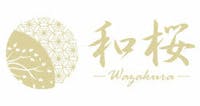General
How can I get a user guide for products?
Are Wazakura's products all made in Japan?
Which tools would you recommend for a beginner?
For beginners, we recommend our 3PCS Bonsai Garden Tool Starter Kit with scissors, tweezers and a broom.
[Bonsai scissors]
This is the most necessary item for pruning bonsai. It is used for trimming of small branches, twigs, and buds.
[Tweezers]
Ideal for removing dead leaves, insects and weeds or applying moss on your bonsai plants.
[Broom]
It is useful for cleaning up dead leaves and smooth out the topsoil.
You will need branch cutter, wire cutter, and wire.
[Concave Branch Cutter]
This is a must-have item for pruning thick branches that cannot be cut with bonsai scissors.
[Wire Cutter]
Cutting wires of alumminium or copper. The rounded ends ensure your bonsai tree won't be damaged during wiring work.
[Wire]
Wiring is a important technique used to train and style bonsais. Wrap wire around the branches or trunk of a tree to reposition it to your liking.
Bonsai Scissors
The blades broke when I cut a branch with scissors.
My scissors have rusted although it is made of stainless steel.
Bonsai Cutter
How should I take care of my Bonsai cutter?
2. Wipe it dry with clean rag, and then oil to protect the metal from corrosion regularly. Ideally, blades should be cleaned and oiled after each use, using a mineral or petroleum low viscosity oil.
For special cares, please see our Bonsai Tool Maintenance video:



